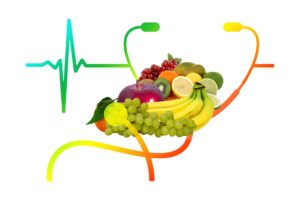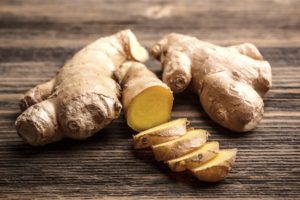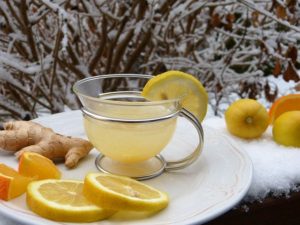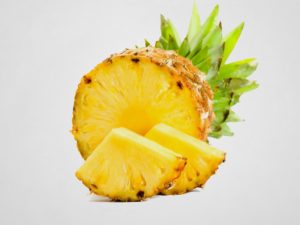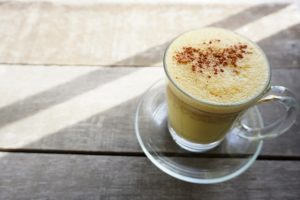6556741
{6556741:AXPI9AQW},{6556741:JWQU9VAT},{6556741:46XRG2SP},{6556741:7948R2JQ},{6556741:PW7UF49F},{6556741:KRFJ5VGN},{6556741:8FB27DIT},{6556741:7CEHETNJ},{6556741:DJIK2IJU},{6556741:ZXJ4QSCZ},{6556741:8VVS56CM},{6556741:QBU3WPE9},{6556741:UTG73XXG},{6556741:2VCTW67R},{6556741:XB6E36NH},{6556741:58FCPGPJ},{6556741:FZM7VR8K},{6556741:K3X2WF7H},{6556741:JIWQ7TBI}
vancouver
50
creator
asc
23730
https://endometriose.app/wp-content/plugins/zotpress/
%7B%22status%22%3A%22success%22%2C%22updateneeded%22%3Afalse%2C%22instance%22%3A%22zotpress-d3f8a2955121010769b15ee092f2f508%22%2C%22meta%22%3A%7B%22request_last%22%3A0%2C%22request_next%22%3A0%2C%22used_cache%22%3Atrue%7D%2C%22data%22%3A%5B%7B%22key%22%3A%22FZM7VR8K%22%2C%22library%22%3A%7B%22id%22%3A6556741%7D%2C%22meta%22%3A%7B%22creatorSummary%22%3A%22A%20and%20Y%22%2C%22parsedDate%22%3A%222020-03-31%22%2C%22numChildren%22%3A0%7D%2C%22bib%22%3A%22%3Cdiv%20class%3D%5C%22csl-bib-body%5C%22%20style%3D%5C%22line-height%3A%201.35%3B%20%5C%22%3E%5Cn%20%20%3Cdiv%20class%3D%5C%22csl-entry%5C%22%20style%3D%5C%22clear%3A%20left%3B%20%5C%22%3E%5Cn%20%20%20%20%3Cdiv%20class%3D%5C%22csl-left-margin%5C%22%20style%3D%5C%22float%3A%20left%3B%20padding-right%3A%200.5em%3B%20text-align%3A%20right%3B%20width%3A%201em%3B%5C%22%3E1.%20%3C%5C%2Fdiv%3E%3Cdiv%20class%3D%5C%22csl-right-inline%5C%22%20style%3D%5C%22margin%3A%200%20.4em%200%201.5em%3B%5C%22%3EA%20V%2C%20Y%20L.%20Curcumin%20and%20Endometriosis%20%5BInternet%5D.%20International%20journal%20of%20molecular%20sciences.%202020%20%5Bcited%202020%20Jun%203%5D.%20Available%20from%3A%20%3Ca%20href%3D%27https%3A%5C%2F%5C%2Fpubmed.ncbi.nlm.nih.gov%5C%2F32244563%5C%2F%27%3Ehttps%3A%5C%2F%5C%2Fpubmed.ncbi.nlm.nih.gov%5C%2F32244563%5C%2F%3C%5C%2Fa%3E%3C%5C%2Fdiv%3E%5Cn%20%20%3C%5C%2Fdiv%3E%5Cn%3C%5C%2Fdiv%3E%22%2C%22data%22%3A%7B%22itemType%22%3A%22webpage%22%2C%22title%22%3A%22Curcumin%20and%20Endometriosis%22%2C%22creators%22%3A%5B%7B%22creatorType%22%3A%22author%22%2C%22firstName%22%3A%22Vall%5Cu00e9e%22%2C%22lastName%22%3A%22A%22%7D%2C%7B%22creatorType%22%3A%22author%22%2C%22firstName%22%3A%22Lecarpentier%22%2C%22lastName%22%3A%22Y%22%7D%5D%2C%22abstractNote%22%3A%22Endometriosis%20is%20one%20of%20the%20main%20common%20gynecological%20disorders%2C%20which%20is%20characterized%20by%20the%20presence%20of%20glands%20and%20stroma%20outside%20the%20uterine%20cavity.%20Some%20findings%20have%20highlighted%20the%20main%20role%20of%20inflammation%20in%20endometriosis%20by%20acting%20on%20proliferation%2C%20apoptosis%20and%20angiogenesis.%20Oxidative%20str%20%5Cu2026%22%2C%22date%22%3A%2203%5C%2F31%5C%2F2020%22%2C%22url%22%3A%22https%3A%5C%2F%5C%2Fpubmed.ncbi.nlm.nih.gov%5C%2F32244563%5C%2F%22%2C%22language%22%3A%22en%22%2C%22collections%22%3A%5B%5D%2C%22dateModified%22%3A%222020-06-03T09%3A09%3A56Z%22%7D%7D%2C%7B%22key%22%3A%22UTG73XXG%22%2C%22library%22%3A%7B%22id%22%3A6556741%7D%2C%22meta%22%3A%7B%22creatorSummary%22%3A%22Ds%20et%20al.%22%2C%22parsedDate%22%3A%222018-03-17%22%2C%22numChildren%22%3A0%7D%2C%22bib%22%3A%22%3Cdiv%20class%3D%5C%22csl-bib-body%5C%22%20style%3D%5C%22line-height%3A%201.35%3B%20%5C%22%3E%5Cn%20%20%3Cdiv%20class%3D%5C%22csl-entry%5C%22%20style%3D%5C%22clear%3A%20left%3B%20%5C%22%3E%5Cn%20%20%20%20%3Cdiv%20class%3D%5C%22csl-left-margin%5C%22%20style%3D%5C%22float%3A%20left%3B%20padding-right%3A%200.5em%3B%20text-align%3A%20right%3B%20width%3A%201em%3B%5C%22%3E1.%20%3C%5C%2Fdiv%3E%3Cdiv%20class%3D%5C%22csl-right-inline%5C%22%20style%3D%5C%22margin%3A%200%20.4em%200%201.5em%3B%5C%22%3EDs%20K%2C%20Y%20A%2C%20Kd%20L.%20A%20Review%20of%20the%20Health%20Benefits%20of%20Cherries%20%5BInternet%5D.%20Nutrients.%202018%20%5Bcited%202020%20Jun%203%5D.%20Available%20from%3A%20%3Ca%20href%3D%27https%3A%5C%2F%5C%2Fpubmed.ncbi.nlm.nih.gov%5C%2F29562604%5C%2F%27%3Ehttps%3A%5C%2F%5C%2Fpubmed.ncbi.nlm.nih.gov%5C%2F29562604%5C%2F%3C%5C%2Fa%3E%3C%5C%2Fdiv%3E%5Cn%20%20%3C%5C%2Fdiv%3E%5Cn%3C%5C%2Fdiv%3E%22%2C%22data%22%3A%7B%22itemType%22%3A%22webpage%22%2C%22title%22%3A%22A%20Review%20of%20the%20Health%20Benefits%20of%20Cherries%22%2C%22creators%22%3A%5B%7B%22creatorType%22%3A%22author%22%2C%22firstName%22%3A%22Kelley%22%2C%22lastName%22%3A%22Ds%22%7D%2C%7B%22creatorType%22%3A%22author%22%2C%22firstName%22%3A%22Adkins%22%2C%22lastName%22%3A%22Y%22%7D%2C%7B%22creatorType%22%3A%22author%22%2C%22firstName%22%3A%22Laugero%22%2C%22lastName%22%3A%22Kd%22%7D%5D%2C%22abstractNote%22%3A%22Increased%20oxidative%20stress%20contributes%20to%20development%20and%20progression%20of%20several%20human%20chronic%20inflammatory%20diseases.%20Cherries%20are%20a%20rich%20source%20of%20polyphenols%20and%20vitamin%20C%20which%20have%20anti-oxidant%20and%20anti-inflammatory%20properties.%20Our%20aim%20is%20to%20summarize%20results%20from%20human%20studies%20regarding%20health%20%5Cu2026%22%2C%22date%22%3A%2203%5C%2F17%5C%2F2018%22%2C%22url%22%3A%22https%3A%5C%2F%5C%2Fpubmed.ncbi.nlm.nih.gov%5C%2F29562604%5C%2F%22%2C%22language%22%3A%22en%22%2C%22collections%22%3A%5B%5D%2C%22dateModified%22%3A%222020-06-03T09%3A08%3A44Z%22%7D%7D%2C%7B%22key%22%3A%22K3X2WF7H%22%2C%22library%22%3A%7B%22id%22%3A6556741%7D%2C%22meta%22%3A%7B%22creatorSummary%22%3A%22H%20et%20al.%22%2C%22parsedDate%22%3A%222019-01-28%22%2C%22numChildren%22%3A0%7D%2C%22bib%22%3A%22%3Cdiv%20class%3D%5C%22csl-bib-body%5C%22%20style%3D%5C%22line-height%3A%201.35%3B%20%5C%22%3E%5Cn%20%20%3Cdiv%20class%3D%5C%22csl-entry%5C%22%20style%3D%5C%22clear%3A%20left%3B%20%5C%22%3E%5Cn%20%20%20%20%3Cdiv%20class%3D%5C%22csl-left-margin%5C%22%20style%3D%5C%22float%3A%20left%3B%20padding-right%3A%200.5em%3B%20text-align%3A%20right%3B%20width%3A%201em%3B%5C%22%3E1.%20%3C%5C%2Fdiv%3E%3Cdiv%20class%3D%5C%22csl-right-inline%5C%22%20style%3D%5C%22margin%3A%200%20.4em%200%201.5em%3B%5C%22%3EH%20H%2C%20M%20YAW%2C%20W%20W.%20Curcumin%20Improves%20Growth%20Factors%20Expression%20of%20Bovine%20Cumulus-Oocyte%20Complexes%20Cultured%20in%20Peritoneal%20Fluid%20of%20Women%20With%20Endometriosis%20%5BInternet%5D.%20International%20journal%20of%20reproductive%20biomedicine%20%28Yazd%2C%20Iran%29.%202019%20%5Bcited%202020%20Jun%203%5D.%20Available%20from%3A%20%3Ca%20href%3D%27https%3A%5C%2F%5C%2Fpubmed.ncbi.nlm.nih.gov%5C%2F31417983%5C%2F%27%3Ehttps%3A%5C%2F%5C%2Fpubmed.ncbi.nlm.nih.gov%5C%2F31417983%5C%2F%3C%5C%2Fa%3E%3C%5C%2Fdiv%3E%5Cn%20%20%3C%5C%2Fdiv%3E%5Cn%3C%5C%2Fdiv%3E%22%2C%22data%22%3A%7B%22itemType%22%3A%22webpage%22%2C%22title%22%3A%22Curcumin%20Improves%20Growth%20Factors%20Expression%20of%20Bovine%20Cumulus-Oocyte%20Complexes%20Cultured%20in%20Peritoneal%20Fluid%20of%20Women%20With%20Endometriosis%22%2C%22creators%22%3A%5B%7B%22creatorType%22%3A%22author%22%2C%22firstName%22%3A%22Hendarto%22%2C%22lastName%22%3A%22H%22%7D%2C%7B%22creatorType%22%3A%22author%22%2C%22firstName%22%3A%22Yohanes%20Ardianta%20Widyanugraha%22%2C%22lastName%22%3A%22M%22%7D%2C%7B%22creatorType%22%3A%22author%22%2C%22firstName%22%3A%22Widjiati%22%2C%22lastName%22%3A%22W%22%7D%5D%2C%22abstractNote%22%3A%22In%20the%20culture%20of%20PF%20from%20infertile%20women%20with%20endometriosis%2C%20curcumin%20addition%20improves%20the%20growth%20factors%20expression%20of%20bovine%20COCs.%20The%20increase%20of%20GDF-9%20and%20KitL%20expressions%20will%20improve%20folliculogenesis.%22%2C%22date%22%3A%2201%5C%2F28%5C%2F2019%22%2C%22url%22%3A%22https%3A%5C%2F%5C%2Fpubmed.ncbi.nlm.nih.gov%5C%2F31417983%5C%2F%22%2C%22language%22%3A%22en%22%2C%22collections%22%3A%5B%5D%2C%22dateModified%22%3A%222020-06-03T09%3A09%3A35Z%22%7D%7D%2C%7B%22key%22%3A%228VVS56CM%22%2C%22library%22%3A%7B%22id%22%3A6556741%7D%2C%22meta%22%3A%7B%22creatorSummary%22%3A%22James%20et%20al.%22%2C%22parsedDate%22%3A%222000%22%2C%22numChildren%22%3A0%7D%2C%22bib%22%3A%22%3Cdiv%20class%3D%5C%22csl-bib-body%5C%22%20style%3D%5C%22line-height%3A%201.35%3B%20%5C%22%3E%5Cn%20%20%3Cdiv%20class%3D%5C%22csl-entry%5C%22%20style%3D%5C%22clear%3A%20left%3B%20%5C%22%3E%5Cn%20%20%20%20%3Cdiv%20class%3D%5C%22csl-left-margin%5C%22%20style%3D%5C%22float%3A%20left%3B%20padding-right%3A%200.5em%3B%20text-align%3A%20right%3B%20width%3A%201em%3B%5C%22%3E1.%20%3C%5C%2Fdiv%3E%3Cdiv%20class%3D%5C%22csl-right-inline%5C%22%20style%3D%5C%22margin%3A%200%20.4em%200%201.5em%3B%5C%22%3EJames%20MJ%2C%20Gibson%20RA%2C%20Cleland%20LG.%20Dietary%20polyunsaturated%20fatty%20acids%20and%20inflammatory%20mediator%20production.%20Am%20J%20Clin%20Nutr.%202000%3B71%281%20Suppl%29%3A343S-8S.%3C%5C%2Fdiv%3E%5Cn%20%20%20%3C%5C%2Fdiv%3E%5Cn%3C%5C%2Fdiv%3E%22%2C%22data%22%3A%7B%22itemType%22%3A%22journalArticle%22%2C%22title%22%3A%22Dietary%20polyunsaturated%20fatty%20acids%20and%20inflammatory%20mediator%20production%22%2C%22creators%22%3A%5B%7B%22creatorType%22%3A%22author%22%2C%22firstName%22%3A%22M.%20J.%22%2C%22lastName%22%3A%22James%22%7D%2C%7B%22creatorType%22%3A%22author%22%2C%22firstName%22%3A%22R.%20A.%22%2C%22lastName%22%3A%22Gibson%22%7D%2C%7B%22creatorType%22%3A%22author%22%2C%22firstName%22%3A%22L.%20G.%22%2C%22lastName%22%3A%22Cleland%22%7D%5D%2C%22abstractNote%22%3A%22Many%20antiinflammatory%20pharmaceutical%20products%20inhibit%20the%20production%20of%20certain%20eicosanoids%20and%20cytokines%20and%20it%20is%20here%20that%20possibilities%20exist%20for%20therapies%20that%20incorporate%20n-3%20and%20n-9%20dietary%20fatty%20acids.%20The%20proinflammatory%20eicosanoids%20prostaglandin%20E%282%29%20%28PGE%282%29%29%20and%20leukotriene%20B%284%29%20%28LTB%284%29%29%20are%20derived%20from%20the%20n-6%20fatty%20acid%20arachidonic%20acid%20%28AA%29%2C%20which%20is%20maintained%20at%20high%20cellular%20concentrations%20by%20the%20high%20n-6%20and%20low%20n-3%20polyunsaturated%20fatty%20acid%20content%20of%20the%20modern%20Western%20diet.%20Flaxseed%20oil%20contains%20the%2018-carbon%20n-3%20fatty%20acid%20alpha-linolenic%20acid%2C%20which%20can%20be%20converted%20after%20ingestion%20to%20the%2020-carbon%20n-3%20fatty%20acid%20eicosapentaenoic%20acid%20%28EPA%29.%20Fish%20oils%20contain%20both%2020-%20and%2022-carbon%20n-3%20fatty%20acids%2C%20EPA%20and%20docosahexaenoic%20acid.%20EPA%20can%20act%20as%20a%20competitive%20inhibitor%20of%20AA%20conversion%20to%20PGE%282%29%20and%20LTB%284%29%2C%20and%20decreased%20synthesis%20of%20one%20or%20both%20of%20these%20eicosanoids%20has%20been%20observed%20after%20inclusion%20of%20flaxseed%20oil%20or%20fish%20oil%20in%20the%20diet.%20Analogous%20to%20the%20effect%20of%20n-3%20fatty%20acids%2C%20inclusion%20of%20the%2020-carbon%20n-9%20fatty%20acid%20eicosatrienoic%20acid%20in%20the%20diet%20also%20results%20in%20decreased%20synthesis%20of%20LTB%284%29.%20Regarding%20the%20proinflammatory%20ctyokines%2C%20tumor%20necrosis%20factor%20alpha%20and%20interleukin%201beta%2C%20studies%20of%20healthy%20volunteers%20and%20rheumatoid%20arthritis%20patients%20have%20shown%20%3C%20or%20%3D%2090%25%20inhibition%20of%20cytokine%20production%20after%20dietary%20supplementation%20with%20fish%20oil.%20Use%20of%20flaxseed%20oil%20in%20domestic%20food%20preparation%20also%20reduced%20production%20of%20these%20cytokines.%20Novel%20antiinflammatory%20therapies%20can%20be%20developed%20that%20take%20advantage%20of%20positive%20interactions%20between%20the%20dietary%20fats%20and%20existing%20or%20newly%20developed%20pharmaceutical%20products.%22%2C%22date%22%3A%2201%202000%22%2C%22language%22%3A%22eng%22%2C%22DOI%22%3A%2210.1093%5C%2Fajcn%5C%2F71.1.343s%22%2C%22ISSN%22%3A%220002-9165%22%2C%22url%22%3A%22%22%2C%22collections%22%3A%5B%5D%2C%22dateModified%22%3A%222020-05-06T09%3A17%3A26Z%22%7D%7D%2C%7B%22key%22%3A%222VCTW67R%22%2C%22library%22%3A%7B%22id%22%3A6556741%7D%2C%22meta%22%3A%7B%22creatorSummary%22%3A%22Kr%20et%20al.%22%2C%22parsedDate%22%3A%222018-10-17%22%2C%22numChildren%22%3A0%7D%2C%22bib%22%3A%22%3Cdiv%20class%3D%5C%22csl-bib-body%5C%22%20style%3D%5C%22line-height%3A%201.35%3B%20%5C%22%3E%5Cn%20%20%3Cdiv%20class%3D%5C%22csl-entry%5C%22%20style%3D%5C%22clear%3A%20left%3B%20%5C%22%3E%5Cn%20%20%20%20%3Cdiv%20class%3D%5C%22csl-left-margin%5C%22%20style%3D%5C%22float%3A%20left%3B%20padding-right%3A%200.5em%3B%20text-align%3A%20right%3B%20width%3A%201em%3B%5C%22%3E1.%20%3C%5C%2Fdiv%3E%3Cdiv%20class%3D%5C%22csl-right-inline%5C%22%20style%3D%5C%22margin%3A%200%20.4em%200%201.5em%3B%5C%22%3EKr%20M%2C%20L%20B%2C%20J%20B.%20Authentic%20Tart%20Cherry%20Juice%20Reduces%20Markers%20of%20Inflammation%20in%20Overweight%20and%20Obese%20Subjects%3A%20A%20Randomized%2C%20Crossover%20Pilot%20Study%20%5BInternet%5D.%20Food%20%26amp%3B%20function.%202018%20%5Bcited%202020%20Jun%203%5D.%20Available%20from%3A%20%3Ca%20href%3D%27https%3A%5C%2F%5C%2Fpubmed.ncbi.nlm.nih.gov%5C%2F30255184%5C%2F%27%3Ehttps%3A%5C%2F%5C%2Fpubmed.ncbi.nlm.nih.gov%5C%2F30255184%5C%2F%3C%5C%2Fa%3E%3C%5C%2Fdiv%3E%5Cn%20%20%3C%5C%2Fdiv%3E%5Cn%3C%5C%2Fdiv%3E%22%2C%22data%22%3A%7B%22itemType%22%3A%22webpage%22%2C%22title%22%3A%22Authentic%20Tart%20Cherry%20Juice%20Reduces%20Markers%20of%20Inflammation%20in%20Overweight%20and%20Obese%20Subjects%3A%20A%20Randomized%2C%20Crossover%20Pilot%20Study%22%2C%22creators%22%3A%5B%7B%22creatorType%22%3A%22author%22%2C%22firstName%22%3A%22Martin%22%2C%22lastName%22%3A%22Kr%22%7D%2C%7B%22creatorType%22%3A%22author%22%2C%22firstName%22%3A%22Burrell%22%2C%22lastName%22%3A%22L%22%7D%2C%7B%22creatorType%22%3A%22author%22%2C%22firstName%22%3A%22Bopp%22%2C%22lastName%22%3A%22J%22%7D%5D%2C%22abstractNote%22%3A%22Subclinical%20inflammation%20is%20frequently%20noted%20in%20chronic%20diseases%20such%20as%20diabetes%2C%20cardiovascular%20disease%20%28CVD%29%20and%20obesity.%20Accumulating%20epidemiological%20evidence%20demonstrates%20that%20diets%20rich%20in%20vegetables%20and%20fruits%2C%20e.g.%2C%20cherries%2C%20may%20significantly%20reduce%20the%20risk%20of%20chronic%20disease%2C%20in%20part%2C%20via%20%5Cu2026%22%2C%22date%22%3A%2210%5C%2F17%5C%2F2018%22%2C%22url%22%3A%22https%3A%5C%2F%5C%2Fpubmed.ncbi.nlm.nih.gov%5C%2F30255184%5C%2F%22%2C%22language%22%3A%22en%22%2C%22collections%22%3A%5B%5D%2C%22dateModified%22%3A%222020-06-03T09%3A11%3A00Z%22%7D%7D%2C%7B%22key%22%3A%22AXPI9AQW%22%2C%22library%22%3A%7B%22id%22%3A6556741%7D%2C%22meta%22%3A%7B%22creatorSummary%22%3A%22Mashhadi%20et%20al.%22%2C%22parsedDate%22%3A%222013-04%22%2C%22numChildren%22%3A0%7D%2C%22bib%22%3A%22%3Cdiv%20class%3D%5C%22csl-bib-body%5C%22%20style%3D%5C%22line-height%3A%201.35%3B%20%5C%22%3E%5Cn%20%20%3Cdiv%20class%3D%5C%22csl-entry%5C%22%20style%3D%5C%22clear%3A%20left%3B%20%5C%22%3E%5Cn%20%20%20%20%3Cdiv%20class%3D%5C%22csl-left-margin%5C%22%20style%3D%5C%22float%3A%20left%3B%20padding-right%3A%200.5em%3B%20text-align%3A%20right%3B%20width%3A%201em%3B%5C%22%3E1.%20%3C%5C%2Fdiv%3E%3Cdiv%20class%3D%5C%22csl-right-inline%5C%22%20style%3D%5C%22margin%3A%200%20.4em%200%201.5em%3B%5C%22%3EMashhadi%20NS%2C%20Ghiasvand%20R%2C%20Askari%20G%2C%20Hariri%20M%2C%20Darvishi%20L%2C%20Mofid%20MR.%20Anti-Oxidative%20and%20Anti-Inflammatory%20Effects%20of%20Ginger%20in%20Health%20and%20Physical%20Activity%3A%20Review%20of%20Current%20Evidence.%20Int%20J%20Prev%20Med%20%5BInternet%5D.%202013%20Apr%20%5Bcited%202020%20Jun%203%5D%3B4%28Suppl%201%29%3AS36%26%23x2013%3B42.%20Available%20from%3A%20%3Ca%20href%3D%27https%3A%5C%2F%5C%2Fwww.ncbi.nlm.nih.gov%5C%2Fpmc%5C%2Farticles%5C%2FPMC3665023%5C%2F%27%3Ehttps%3A%5C%2F%5C%2Fwww.ncbi.nlm.nih.gov%5C%2Fpmc%5C%2Farticles%5C%2FPMC3665023%5C%2F%3C%5C%2Fa%3E%3C%5C%2Fdiv%3E%5Cn%20%20%3C%5C%2Fdiv%3E%5Cn%3C%5C%2Fdiv%3E%22%2C%22data%22%3A%7B%22itemType%22%3A%22journalArticle%22%2C%22title%22%3A%22Anti-Oxidative%20and%20Anti-Inflammatory%20Effects%20of%20Ginger%20in%20Health%20and%20Physical%20Activity%3A%20Review%20of%20Current%20Evidence%22%2C%22creators%22%3A%5B%7B%22creatorType%22%3A%22author%22%2C%22firstName%22%3A%22Nafiseh%20Shokri%22%2C%22lastName%22%3A%22Mashhadi%22%7D%2C%7B%22creatorType%22%3A%22author%22%2C%22firstName%22%3A%22Reza%22%2C%22lastName%22%3A%22Ghiasvand%22%7D%2C%7B%22creatorType%22%3A%22author%22%2C%22firstName%22%3A%22Gholamreza%22%2C%22lastName%22%3A%22Askari%22%7D%2C%7B%22creatorType%22%3A%22author%22%2C%22firstName%22%3A%22Mitra%22%2C%22lastName%22%3A%22Hariri%22%7D%2C%7B%22creatorType%22%3A%22author%22%2C%22firstName%22%3A%22Leila%22%2C%22lastName%22%3A%22Darvishi%22%7D%2C%7B%22creatorType%22%3A%22author%22%2C%22firstName%22%3A%22Mohammad%20Reza%22%2C%22lastName%22%3A%22Mofid%22%7D%5D%2C%22abstractNote%22%3A%22Background%3A%5CnGinger%20%28Zingiber%20officinale%20Rosc.%29%20belongs%20to%20the%20family%20Zingiberaceae.%20The%20health-promoting%20perspective%20of%20ginger%20is%20attributed%20to%20its%20rich%20phytochemistry.%20This%20study%20aimed%20to%20review%20the%20current%20evidence%20on%20ginger%20effects%20as%20an%20anti-inflammatory%20and%20anti-oxidative.%5Cn%5CnMethods%3A%5CnWe%20searched%20MEDLINE%20for%20related%20publications%20using%20%5Cu201cginger%5Cu201d%20and%20%5Cu201canti-oxidative%5Cu201d%20and%20%5Cu201cginger%5Cu201d%20and%20%5Cu201canti-inflammatory%5Cu201d%20as%20keywords.%20This%20search%20had%20considered%20Papers%20that%20had%20been%20published%20between%202000%20and%202010%20without%20any%20filter.%5Cn%5CnConclusions%3A%5CnThe%20anticancer%20potential%20of%20ginger%20is%20well%20documented%20and%20its%20functional%20ingredients%20like%20gingerols%2C%20shogaol%2C%20and%20paradols%20are%20the%20valuable%20ingredients%20which%20can%20prevent%20various%20cancers.%20This%20review%20concludes%20to%20favor%20ginger%20but%20some%20ambiguities%20necessitate%20further%20research%20before%20claiming%20its%20efficacy.%22%2C%22date%22%3A%222013-4%22%2C%22language%22%3A%22%22%2C%22DOI%22%3A%22%22%2C%22ISSN%22%3A%222008-7802%22%2C%22url%22%3A%22https%3A%5C%2F%5C%2Fwww.ncbi.nlm.nih.gov%5C%2Fpmc%5C%2Farticles%5C%2FPMC3665023%5C%2F%22%2C%22collections%22%3A%5B%5D%2C%22dateModified%22%3A%222020-06-03T09%3A05%3A39Z%22%7D%7D%2C%7B%22key%22%3A%22KRFJ5VGN%22%2C%22library%22%3A%7B%22id%22%3A6556741%7D%2C%22meta%22%3A%7B%22creatorSummary%22%3A%22Mendes%20et%20al.%22%2C%22parsedDate%22%3A%222019-01%22%2C%22numChildren%22%3A0%7D%2C%22bib%22%3A%22%3Cdiv%20class%3D%5C%22csl-bib-body%5C%22%20style%3D%5C%22line-height%3A%201.35%3B%20%5C%22%3E%5Cn%20%20%3Cdiv%20class%3D%5C%22csl-entry%5C%22%20style%3D%5C%22clear%3A%20left%3B%20%5C%22%3E%5Cn%20%20%20%20%3Cdiv%20class%3D%5C%22csl-left-margin%5C%22%20style%3D%5C%22float%3A%20left%3B%20padding-right%3A%200.5em%3B%20text-align%3A%20right%3B%20width%3A%201em%3B%5C%22%3E1.%20%3C%5C%2Fdiv%3E%3Cdiv%20class%3D%5C%22csl-right-inline%5C%22%20style%3D%5C%22margin%3A%200%20.4em%200%201.5em%3B%5C%22%3EMendes%20M-L-T%2C%20do%20Nascimento-J%26%23xFA%3Bnior%20E-M%2C%20Reinheimer%20D-M%2C%20Martins-Filho%20P-R-S.%20Efficacy%20of%20proteolytic%20enzyme%20bromelain%20on%20health%20outcomes%20after%20third%20molar%20surgery.%20Systematic%20review%20and%20meta-analysis%20of%20randomized%20clinical%20trials.%20Med%20Oral%20Patol%20Oral%20Cir%20Bucal%20%5BInternet%5D.%202019%20Jan%20%5Bcited%202020%20Jun%203%5D%3B24%281%29%3Ae61%26%23x2013%3B9.%20Available%20from%3A%20%3Ca%20href%3D%27https%3A%5C%2F%5C%2Fwww.ncbi.nlm.nih.gov%5C%2Fpmc%5C%2Farticles%5C%2FPMC6344017%5C%2F%27%3Ehttps%3A%5C%2F%5C%2Fwww.ncbi.nlm.nih.gov%5C%2Fpmc%5C%2Farticles%5C%2FPMC6344017%5C%2F%3C%5C%2Fa%3E%3C%5C%2Fdiv%3E%5Cn%20%20%3C%5C%2Fdiv%3E%5Cn%3C%5C%2Fdiv%3E%22%2C%22data%22%3A%7B%22itemType%22%3A%22journalArticle%22%2C%22title%22%3A%22Efficacy%20of%20proteolytic%20enzyme%20bromelain%20on%20health%20outcomes%20after%20third%20molar%20surgery.%20Systematic%20review%20and%20meta-analysis%20of%20randomized%20clinical%20trials%22%2C%22creators%22%3A%5B%7B%22creatorType%22%3A%22author%22%2C%22firstName%22%3A%22M%5Cu00e1rio-Luis-Tavares%22%2C%22lastName%22%3A%22Mendes%22%7D%2C%7B%22creatorType%22%3A%22author%22%2C%22firstName%22%3A%22Edmundo-Marques%22%2C%22lastName%22%3A%22do%20Nascimento-J%5Cu00fanior%22%7D%2C%7B%22creatorType%22%3A%22author%22%2C%22firstName%22%3A%22Daniele-Machado%22%2C%22lastName%22%3A%22Reinheimer%22%7D%2C%7B%22creatorType%22%3A%22author%22%2C%22firstName%22%3A%22Paulo-Ricardo-Saquete%22%2C%22lastName%22%3A%22Martins-Filho%22%7D%5D%2C%22abstractNote%22%3A%22Background%5CnBromelain%20is%20a%20cysteine%20protease%20isolated%20from%20pineapple%20with%20a%20range%20of%20biological%20properties%20including%20platelet%20aggregation%20inhibition%20and%20anti-inflammatory%20effects.%20Recent%20studies%20have%20evaluated%20the%20clinical%20implications%20of%20bromelain%20in%20reducing%20postoperative%20inflammatory%20complications%20after%20third%20molar%20surgery%2C%20but%20the%20results%20are%20contrasting.%20This%20systematic%20review%20and%20meta-analysis%20evaluated%20the%20effects%20of%20bromelain%20on%20health%20outcomes%20in%20patients%20submitted%20to%20third%20molar%20surgery.%5Cn%5CnMaterial%20and%20Methods%5CnThe%20study%20was%20conducted%20following%20the%20PRISMA%20statement.%20Searches%20were%20conducted%20in%20six%20electronic%20databases%20and%20Google%20Scholar%20from%20inception%20to%20May%202018.%20The%20following%20elements%20were%20used%20to%20define%20eligibility%20criteria%3A%20%281%29%20population%3A%20patients%20undergoing%20third%20molar%20surgery%3B%20%282%29%20intervention%20and%20controls%3A%20bromelain%20vs%20placebo%20or%20no-treatment%20control%20group%3B%20%283%29%20outcomes%3A%20quality%20of%20life%2C%20postoperative%20pain%2C%20rescue%20analgesic%20consumption%2C%20facial%20swelling%2C%20and%20trismus%3B%20and%20%284%29%20study%20type%3A%20randomized%20clinical%20trials%20%28RCTs%29.%20Treatment%20effects%20were%20defined%20as%20weighted%20%28WMD%29%20or%20standardized%20mean%20difference%20%28SMD%29%20and%2095%25CIs.%5Cn%5CnResults%5CnSix%20RCTs%20were%20included%20in%20the%20meta-analysis.%20There%20was%20large%20effect%20size%20of%20bromelain%20on%20improving%20physical%20appearance%20%28SMD%20-0.77%2C%20CI%25%2095%20-1.11%20to%20-0.42%29%2C%20social%20isolation%20%28SMD%20-0.97%2C%20CI%25%2095%20-1.74%20to%20-0.21%29%2C%20and%20sleep%20quality%20%28SMD%20-1.19%2C%20CI%25%2095%20-1.97%20to%20-0.40%29%20during%20the%20first%20postoperative%20week.%20Differences%20in%20pain%20intensity%20were%20found%20during%20the%20first%2024h%20%28SMD%20-0.49%2C%20CI%2095%25%20-0.82%20to%20-0.17%29%20and%207%20days%20after%20surgery%20%28SMD%20-0.52%2C%20CI%2095%25%20-0.79%20to%20-0.24%29.%20No%20evidence%20was%20found%20that%20bromelain%20was%20effective%20in%20reducing%20trismus%20and%20facial%20swelling.%5Cn%5CnConclusions%5CnThe%20currently%20available%20evidence%20suggests%20that%20bromelain%20has%20a%20beneficial%20effect%20in%20reducing%20pain%20and%20has%20a%20positive%20impact%20on%20patient%20quality%20of%20life%20after%20third%20molar%20surgery.%20However%2C%20therapeutic%20advances%20for%20the%20use%20of%20bromelain%20need%20a%20high%20level%20of%20evidence%20and%20further%20head-to-head%20RCTs%20are%20needed%20to%20inform%20clinical%20choices.%2C%20%5Cn%20Key%20words%3ABromelain%2C%20third%20molar%2C%20oral%20surgical%20procedures.%22%2C%22date%22%3A%222019-1%22%2C%22language%22%3A%22%22%2C%22DOI%22%3A%2210.4317%5C%2Fmedoral.22731%22%2C%22ISSN%22%3A%221698-4447%22%2C%22url%22%3A%22https%3A%5C%2F%5C%2Fwww.ncbi.nlm.nih.gov%5C%2Fpmc%5C%2Farticles%5C%2FPMC6344017%5C%2F%22%2C%22collections%22%3A%5B%5D%2C%22dateModified%22%3A%222020-06-03T09%3A07%3A06Z%22%7D%7D%2C%7B%22key%22%3A%22ZXJ4QSCZ%22%2C%22library%22%3A%7B%22id%22%3A6556741%7D%2C%22meta%22%3A%7B%22creatorSummary%22%3A%22Missmer%20et%20al.%22%2C%22parsedDate%22%3A%222010-06%22%2C%22numChildren%22%3A0%7D%2C%22bib%22%3A%22%3Cdiv%20class%3D%5C%22csl-bib-body%5C%22%20style%3D%5C%22line-height%3A%201.35%3B%20%5C%22%3E%5Cn%20%20%3Cdiv%20class%3D%5C%22csl-entry%5C%22%20style%3D%5C%22clear%3A%20left%3B%20%5C%22%3E%5Cn%20%20%20%20%3Cdiv%20class%3D%5C%22csl-left-margin%5C%22%20style%3D%5C%22float%3A%20left%3B%20padding-right%3A%200.5em%3B%20text-align%3A%20right%3B%20width%3A%201em%3B%5C%22%3E1.%20%3C%5C%2Fdiv%3E%3Cdiv%20class%3D%5C%22csl-right-inline%5C%22%20style%3D%5C%22margin%3A%200%20.4em%200%201.5em%3B%5C%22%3EMissmer%20SA%2C%20Chavarro%20JE%2C%20Malspeis%20S%2C%20Bertone-Johnson%20ER%2C%20Hornstein%20MD%2C%20Spiegelman%20D%2C%20et%20al.%20A%20prospective%20study%20of%20dietary%20fat%20consumption%20and%20endometriosis%20risk.%20Hum%20Reprod.%202010%20Jun%3B25%286%29%3A1528%26%23x2013%3B35.%3C%5C%2Fdiv%3E%5Cn%20%20%20%3C%5C%2Fdiv%3E%5Cn%3C%5C%2Fdiv%3E%22%2C%22data%22%3A%7B%22itemType%22%3A%22journalArticle%22%2C%22title%22%3A%22A%20prospective%20study%20of%20dietary%20fat%20consumption%20and%20endometriosis%20risk%22%2C%22creators%22%3A%5B%7B%22creatorType%22%3A%22author%22%2C%22firstName%22%3A%22Stacey%20A.%22%2C%22lastName%22%3A%22Missmer%22%7D%2C%7B%22creatorType%22%3A%22author%22%2C%22firstName%22%3A%22Jorge%20E.%22%2C%22lastName%22%3A%22Chavarro%22%7D%2C%7B%22creatorType%22%3A%22author%22%2C%22firstName%22%3A%22Susan%22%2C%22lastName%22%3A%22Malspeis%22%7D%2C%7B%22creatorType%22%3A%22author%22%2C%22firstName%22%3A%22Elizabeth%20R.%22%2C%22lastName%22%3A%22Bertone-Johnson%22%7D%2C%7B%22creatorType%22%3A%22author%22%2C%22firstName%22%3A%22Mark%20D.%22%2C%22lastName%22%3A%22Hornstein%22%7D%2C%7B%22creatorType%22%3A%22author%22%2C%22firstName%22%3A%22Donna%22%2C%22lastName%22%3A%22Spiegelman%22%7D%2C%7B%22creatorType%22%3A%22author%22%2C%22firstName%22%3A%22Robert%20L.%22%2C%22lastName%22%3A%22Barbieri%22%7D%2C%7B%22creatorType%22%3A%22author%22%2C%22firstName%22%3A%22Walter%20C.%22%2C%22lastName%22%3A%22Willett%22%7D%2C%7B%22creatorType%22%3A%22author%22%2C%22firstName%22%3A%22Susan%20E.%22%2C%22lastName%22%3A%22Hankinson%22%7D%5D%2C%22abstractNote%22%3A%22BACKGROUND%3A%20Endometriosis%20is%20a%20prevalent%20but%20enigmatic%20gynecologic%20disorder%20for%20which%20few%20modifiable%20risk%20factors%20have%20been%20identified.%20Fish%20oil%20consumption%20has%20been%20associated%20with%20symptom%20improvement%20in%20studies%20of%20women%20with%20primary%20dysmenorrhea%20and%20with%20decreased%20endometriosis%20risk%20in%20autotransplantation%20animal%20studies.%5CnMETHODS%3A%20To%20investigate%20the%20relation%20between%20dietary%20fat%20intake%20and%20the%20risk%20of%20endometriosis%2C%20we%20analyzed%2012%20years%20of%20prospective%20data%20from%20the%20Nurses%27%20Health%20Study%20II%20that%20began%20in%201989.%20Dietary%20fat%20was%20assessed%20via%20food%20frequency%20questionnaire%20in%201991%2C%201995%20and%201999.%20We%20used%20Cox%20proportional%20hazards%20models%20adjusted%20for%20total%20energy%20intake%2C%20parity%2C%20race%20and%20body%20mass%20index%20at%20age%2018%2C%20and%20assessed%20cumulatively%20averaged%20fat%20intake%20across%20the%20three%20diet%20questionnaires.%5CnRESULTS%3A%20During%20the%20586%20153%20person-years%20of%20follow-up%2C%201199%20cases%20of%20laparoscopically%20confirmed%20endometriosis%20were%20reported.%20Although%20total%20fat%20consumption%20was%20not%20associated%20with%20endometriosis%20risk%2C%20those%20women%20in%20the%20highest%20fifth%20of%20long-chain%20omega-3%20fatty%20acid%20consumption%20were%2022%25%20less%20likely%20to%20be%20diagnosed%20with%20endometriosis%20compared%20with%20those%20with%20the%20lowest%20fifth%20of%20intake%20%5B95%25%20confidence%20interval%20%28CI%29%20%3D%200.62-0.99%3B%20P-value%2C%20test%20for%20linear%20trend%20%28Pt%29%20%3D%200.03%5D.%20In%20addition%2C%20those%20in%20the%20highest%20quintile%20of%20trans-unsaturated%20fat%20intake%20were%2048%25%20more%20likely%20to%20be%20diagnosed%20with%20endometriosis%20%2895%25%20CI%20%3D%201.17-1.88%3B%20Pt%20%3D%200.001%29.%5CnCONCLUSION%3A%20These%20data%20suggest%20that%20specific%20types%20of%20dietary%20fat%20are%20associated%20with%20the%20incidence%20of%20laparoscopically%20confirmed%20endometriosis%2C%20and%20that%20these%20relations%20may%20indicate%20modifiable%20risk.%20This%20evidence%20additionally%20provides%20another%20disease%20association%20that%20supports%20efforts%20to%20remove%20trans%20fat%20from%20hydrogenated%20oils%20from%20the%20food%20supply.%22%2C%22date%22%3A%22Jun%202010%22%2C%22language%22%3A%22eng%22%2C%22DOI%22%3A%2210.1093%5C%2Fhumrep%5C%2Fdeq044%22%2C%22ISSN%22%3A%221460-2350%22%2C%22url%22%3A%22%22%2C%22collections%22%3A%5B%5D%2C%22dateModified%22%3A%222020-05-06T09%3A16%3A33Z%22%7D%7D%2C%7B%22key%22%3A%227CEHETNJ%22%2C%22library%22%3A%7B%22id%22%3A6556741%7D%2C%22meta%22%3A%7B%22creatorSummary%22%3A%22Pavan%20et%20al.%22%2C%22parsedDate%22%3A%222012%22%2C%22numChildren%22%3A0%7D%2C%22bib%22%3A%22%3Cdiv%20class%3D%5C%22csl-bib-body%5C%22%20style%3D%5C%22line-height%3A%201.35%3B%20%5C%22%3E%5Cn%20%20%3Cdiv%20class%3D%5C%22csl-entry%5C%22%20style%3D%5C%22clear%3A%20left%3B%20%5C%22%3E%5Cn%20%20%20%20%3Cdiv%20class%3D%5C%22csl-left-margin%5C%22%20style%3D%5C%22float%3A%20left%3B%20padding-right%3A%200.5em%3B%20text-align%3A%20right%3B%20width%3A%201em%3B%5C%22%3E1.%20%3C%5C%2Fdiv%3E%3Cdiv%20class%3D%5C%22csl-right-inline%5C%22%20style%3D%5C%22margin%3A%200%20.4em%200%201.5em%3B%5C%22%3EPavan%20R%2C%20Jain%20S%2C%20Shraddha%2C%20Kumar%20A.%20Properties%20and%20Therapeutic%20Application%20of%20Bromelain%3A%20A%20Review.%20Biotechnol%20Res%20Int%20%5BInternet%5D.%202012%20%5Bcited%202020%20Jun%203%5D%3B2012.%20Available%20from%3A%20%3Ca%20href%3D%27https%3A%5C%2F%5C%2Fwww.ncbi.nlm.nih.gov%5C%2Fpmc%5C%2Farticles%5C%2FPMC3529416%5C%2F%27%3Ehttps%3A%5C%2F%5C%2Fwww.ncbi.nlm.nih.gov%5C%2Fpmc%5C%2Farticles%5C%2FPMC3529416%5C%2F%3C%5C%2Fa%3E%3C%5C%2Fdiv%3E%5Cn%20%20%3C%5C%2Fdiv%3E%5Cn%3C%5C%2Fdiv%3E%22%2C%22data%22%3A%7B%22itemType%22%3A%22journalArticle%22%2C%22title%22%3A%22Properties%20and%20Therapeutic%20Application%20of%20Bromelain%3A%20A%20Review%22%2C%22creators%22%3A%5B%7B%22creatorType%22%3A%22author%22%2C%22firstName%22%3A%22Rajendra%22%2C%22lastName%22%3A%22Pavan%22%7D%2C%7B%22creatorType%22%3A%22author%22%2C%22firstName%22%3A%22Sapna%22%2C%22lastName%22%3A%22Jain%22%7D%2C%7B%22creatorType%22%3A%22author%22%2C%22name%22%3A%22Shraddha%22%7D%2C%7B%22creatorType%22%3A%22author%22%2C%22firstName%22%3A%22Ajay%22%2C%22lastName%22%3A%22Kumar%22%7D%5D%2C%22abstractNote%22%3A%22Bromelain%20belongs%20to%20a%20group%20of%20protein%20digesting%20enzymes%20obtained%20commercially%20from%20the%20fruit%20or%20stem%20of%20pineapple.%20Fruit%20bromelain%20and%20stem%20bromelainare%20prepared%20differently%20and%20they%20contain%20different%20enzymatic%20composition.%20%5Cu201cBromelain%5Cu201d%20refers%20usually%20to%20the%20%5Cu201cstem%20bromelain.%5Cu201d%20Bromelain%20is%20a%20mixture%20of%20different%20thiol%20endopeptidases%20and%20other%20components%20like%20phosphatase%2C%20glucosidase%2C%20peroxidase%2C%20cellulase%2C%20escharase%2C%20and%20several%20protease%20inhibitors.%20In%20vitro%20and%20in%20vivo%20studies%20demonstrate%20that%20bromelain%20exhibits%20various%20fibrinolytic%2C%20antiedematous%2C%20antithrombotic%2C%20and%20anti-inflammatory%20activities.%20Bromelain%20is%20considerably%20absorbable%20in%20the%20body%20without%20losing%20its%20proteolytic%20activity%20and%20without%20producing%20any%20major%20side%20effects.%20Bromelain%20accounts%20for%20many%20therapeutic%20benefits%20like%20the%20treatment%20of%20angina%20pectoris%2C%20bronchitis%2C%20sinusitis%2C%20surgical%20trauma%2C%20and%20thrombophlebitis%2C%20debridement%20of%20wounds%2C%20and%20enhanced%20absorption%20of%20drugs%2C%20particularly%20antibiotics.%20It%20also%20relieves%20osteoarthritis%2C%20diarrhea%2C%20and%20various%20cardiovascular%20disorders.%20Bromelain%20also%20possesses%20some%20anticancerous%20activities%20and%20promotes%20apoptotic%20cell%20death.%20This%20paper%20reviews%20the%20important%20properties%20and%20therapeutic%20applications%20of%20bromelain%2C%20along%20with%20the%20possible%20mode%20of%20action.%22%2C%22date%22%3A%222012%22%2C%22language%22%3A%22%22%2C%22DOI%22%3A%2210.1155%5C%2F2012%5C%2F976203%22%2C%22ISSN%22%3A%222090-3138%22%2C%22url%22%3A%22https%3A%5C%2F%5C%2Fwww.ncbi.nlm.nih.gov%5C%2Fpmc%5C%2Farticles%5C%2FPMC3529416%5C%2F%22%2C%22collections%22%3A%5B%5D%2C%22dateModified%22%3A%222020-06-03T09%3A07%3A43Z%22%7D%7D%2C%7B%22key%22%3A%228FB27DIT%22%2C%22library%22%3A%7B%22id%22%3A6556741%7D%2C%22meta%22%3A%7B%22creatorSummary%22%3A%22Rathnavelu%20et%20al.%22%2C%22parsedDate%22%3A%222016-09-01%22%2C%22numChildren%22%3A0%7D%2C%22bib%22%3A%22%3Cdiv%20class%3D%5C%22csl-bib-body%5C%22%20style%3D%5C%22line-height%3A%201.35%3B%20%5C%22%3E%5Cn%20%20%3Cdiv%20class%3D%5C%22csl-entry%5C%22%20style%3D%5C%22clear%3A%20left%3B%20%5C%22%3E%5Cn%20%20%20%20%3Cdiv%20class%3D%5C%22csl-left-margin%5C%22%20style%3D%5C%22float%3A%20left%3B%20padding-right%3A%200.5em%3B%20text-align%3A%20right%3B%20width%3A%201em%3B%5C%22%3E1.%20%3C%5C%2Fdiv%3E%3Cdiv%20class%3D%5C%22csl-right-inline%5C%22%20style%3D%5C%22margin%3A%200%20.4em%200%201.5em%3B%5C%22%3ERathnavelu%20V%2C%20Alitheen%20NB%2C%20Sohila%20S%2C%20Kanagesan%20S%2C%20Ramesh%20R.%20Potential%20role%20of%20bromelain%20in%20clinical%20and%20therapeutic%20applications%20%28Review%29.%20Biomedical%20Reports%20%5BInternet%5D.%202016%20Sep%201%20%5Bcited%202020%20Jun%203%5D%3B5%283%29%3A283%26%23x2013%3B8.%20Available%20from%3A%20%3Ca%20href%3D%27http%3A%5C%2F%5C%2Fwww.spandidos-publications.com%5C%2F10.3892%5C%2Fbr.2016.720%5C%2Fabstract%27%3Ehttp%3A%5C%2F%5C%2Fwww.spandidos-publications.com%5C%2F10.3892%5C%2Fbr.2016.720%5C%2Fabstract%3C%5C%2Fa%3E%3C%5C%2Fdiv%3E%5Cn%20%20%3C%5C%2Fdiv%3E%5Cn%3C%5C%2Fdiv%3E%22%2C%22data%22%3A%7B%22itemType%22%3A%22journalArticle%22%2C%22title%22%3A%22Potential%20role%20of%20bromelain%20in%20clinical%20and%20therapeutic%20applications%20%28Review%29%22%2C%22creators%22%3A%5B%7B%22creatorType%22%3A%22author%22%2C%22firstName%22%3A%22Vidhya%22%2C%22lastName%22%3A%22Rathnavelu%22%7D%2C%7B%22creatorType%22%3A%22author%22%2C%22firstName%22%3A%22Noorjahan%20Banu%22%2C%22lastName%22%3A%22Alitheen%22%7D%2C%7B%22creatorType%22%3A%22author%22%2C%22firstName%22%3A%22Subramaniam%22%2C%22lastName%22%3A%22Sohila%22%7D%2C%7B%22creatorType%22%3A%22author%22%2C%22firstName%22%3A%22Samikannu%22%2C%22lastName%22%3A%22Kanagesan%22%7D%2C%7B%22creatorType%22%3A%22author%22%2C%22firstName%22%3A%22Rajendran%22%2C%22lastName%22%3A%22Ramesh%22%7D%5D%2C%22abstractNote%22%3A%22%22%2C%22date%22%3A%222016-09-01%22%2C%22language%22%3A%22%22%2C%22DOI%22%3A%2210.3892%5C%2Fbr.2016.720%22%2C%22ISSN%22%3A%222049-9434%22%2C%22url%22%3A%22http%3A%5C%2F%5C%2Fwww.spandidos-publications.com%5C%2F10.3892%5C%2Fbr.2016.720%5C%2Fabstract%22%2C%22collections%22%3A%5B%5D%2C%22dateModified%22%3A%222020-06-03T09%3A07%3A25Z%22%7D%7D%2C%7B%22key%22%3A%227948R2JQ%22%2C%22library%22%3A%7B%22id%22%3A6556741%7D%2C%22meta%22%3A%7B%22creatorSummary%22%3A%22Rayati%20et%20al.%22%2C%22parsedDate%22%3A%222017%22%2C%22numChildren%22%3A0%7D%2C%22bib%22%3A%22%3Cdiv%20class%3D%5C%22csl-bib-body%5C%22%20style%3D%5C%22line-height%3A%201.35%3B%20%5C%22%3E%5Cn%20%20%3Cdiv%20class%3D%5C%22csl-entry%5C%22%20style%3D%5C%22clear%3A%20left%3B%20%5C%22%3E%5Cn%20%20%20%20%3Cdiv%20class%3D%5C%22csl-left-margin%5C%22%20style%3D%5C%22float%3A%20left%3B%20padding-right%3A%200.5em%3B%20text-align%3A%20right%3B%20width%3A%201em%3B%5C%22%3E1.%20%3C%5C%2Fdiv%3E%3Cdiv%20class%3D%5C%22csl-right-inline%5C%22%20style%3D%5C%22margin%3A%200%20.4em%200%201.5em%3B%5C%22%3ERayati%20F%2C%20Hajmanouchehri%20F%2C%20Najafi%20E.%20Comparison%20of%20anti-inflammatory%20and%20analgesic%20effects%20of%20Ginger%20powder%20and%20Ibuprofen%20in%20postsurgical%20pain%20model%3A%20A%20randomized%2C%20double-blind%2C%20case%26%23x2013%3Bcontrol%20clinical%20trial.%20Dent%20Res%20J%20%28Isfahan%29%20%5BInternet%5D.%202017%20%5Bcited%202020%20Jun%203%5D%3B14%281%29%3A1%26%23x2013%3B7.%20Available%20from%3A%20%3Ca%20href%3D%27https%3A%5C%2F%5C%2Fwww.ncbi.nlm.nih.gov%5C%2Fpmc%5C%2Farticles%5C%2FPMC5356382%5C%2F%27%3Ehttps%3A%5C%2F%5C%2Fwww.ncbi.nlm.nih.gov%5C%2Fpmc%5C%2Farticles%5C%2FPMC5356382%5C%2F%3C%5C%2Fa%3E%3C%5C%2Fdiv%3E%5Cn%20%20%3C%5C%2Fdiv%3E%5Cn%3C%5C%2Fdiv%3E%22%2C%22data%22%3A%7B%22itemType%22%3A%22journalArticle%22%2C%22title%22%3A%22Comparison%20of%20anti-inflammatory%20and%20analgesic%20effects%20of%20Ginger%20powder%20and%20Ibuprofen%20in%20postsurgical%20pain%20model%3A%20A%20randomized%2C%20double-blind%2C%20case%5Cu2013control%20clinical%20trial%22%2C%22creators%22%3A%5B%7B%22creatorType%22%3A%22author%22%2C%22firstName%22%3A%22Farshid%22%2C%22lastName%22%3A%22Rayati%22%7D%2C%7B%22creatorType%22%3A%22author%22%2C%22firstName%22%3A%22Fatemeh%22%2C%22lastName%22%3A%22Hajmanouchehri%22%7D%2C%7B%22creatorType%22%3A%22author%22%2C%22firstName%22%3A%22Elnaz%22%2C%22lastName%22%3A%22Najafi%22%7D%5D%2C%22abstractNote%22%3A%22Background%3A%5CnGinger%20has%20been%20used%20as%20an%20herbal%20drug%20for%20a%20long%20time%20for%20the%20treatment%20of%20chronic%20inflammatory%20conditions.%5Cn%5CnMaterials%20and%20Methods%3A%5CnThis%20randomized%2C%20double-blind%20clinical%20trial%20was%20conducted%20on%2067%20healthy%20adults%20with%20at%20least%20one%20impacted%20lower%20third%20molar.%20Participants%20were%20randomly%20allocated%20into%20three%20groups%3A%20Ibuprofen%2C%20Ginger%2C%20and%20placebo.%20Evaluation%20of%20inflammation%20was%20done%20by%20measuring%20cheek%20swelling%2C%20mouth%20opening%20ability%2C%20serum%20C-reactive%20protein%20%28CRP%29%20levels%2C%20and%20visual%20analog%20scale%20%28for%20pain%20scoring%29.%20The%20number%20and%20the%20time%20of%20using%20rescue%20medication%20were%20recorded%20too.%5Cn%5CnResults%3A%5CnSixty%20patients%20completed%20the%20study.%20In%20all%20three%20groups%2C%20there%20was%20a%20significant%20increase%20in%20the%20mean%20cheek%20swelling%20measures%2C%20compared%20with%20the%20baseline%2C%20until%20day%205.%20The%20reduction%20in%20mouth%20opening%20ability%20was%20significant%20in%20all%20three%20groups%2C%20compared%20with%20the%20baseline%2C%20until%20day%205.%20There%20was%20no%20significant%20difference%20between%20ibuprofenand%20ginger%20groups%20in%20pain%20scores%20in%20all%20follow-up%20days.%20Number%20of%20required%20rescue%20medication%20on%20the%20day%20of%20surgery%20was%20significantly%20more%20in%20the%20placebo%20group.%20No%20significant%20or%20strong%20correlations%20were%20found%20between%20CRP%20levels%20and%20clinical%20findings.%5Cn%5CnConclusion%3A%5CnWithin%20the%20limitations%20of%20this%20study%2C%20it%20can%20ban%20be%20concluded%20that%20gingerpowder%20is%20as%20effective%20as%20ibuprofenin%20the%20management%20of%20postsurgical%20sequelae.%20Furthermore%2C%20CRP%20levels%20alone%20are%20not%20suggested%20for%20the%20assessment%20of%20anti-inflammatory%20effects%20of%20drugs.%22%2C%22date%22%3A%222017%22%2C%22language%22%3A%22%22%2C%22DOI%22%3A%22%22%2C%22ISSN%22%3A%221735-3327%22%2C%22url%22%3A%22https%3A%5C%2F%5C%2Fwww.ncbi.nlm.nih.gov%5C%2Fpmc%5C%2Farticles%5C%2FPMC5356382%5C%2F%22%2C%22collections%22%3A%5B%5D%2C%22dateModified%22%3A%222020-06-03T09%3A06%3A33Z%22%7D%7D%2C%7B%22key%22%3A%2246XRG2SP%22%2C%22library%22%3A%7B%22id%22%3A6556741%7D%2C%22meta%22%3A%7B%22creatorSummary%22%3A%22Rc%20et%20al.%22%2C%22parsedDate%22%3A%222007-02%22%2C%22numChildren%22%3A0%7D%2C%22bib%22%3A%22%3Cdiv%20class%3D%5C%22csl-bib-body%5C%22%20style%3D%5C%22line-height%3A%201.35%3B%20%5C%22%3E%5Cn%20%20%3Cdiv%20class%3D%5C%22csl-entry%5C%22%20style%3D%5C%22clear%3A%20left%3B%20%5C%22%3E%5Cn%20%20%20%20%3Cdiv%20class%3D%5C%22csl-left-margin%5C%22%20style%3D%5C%22float%3A%20left%3B%20padding-right%3A%200.5em%3B%20text-align%3A%20right%3B%20width%3A%201em%3B%5C%22%3E1.%20%3C%5C%2Fdiv%3E%3Cdiv%20class%3D%5C%22csl-right-inline%5C%22%20style%3D%5C%22margin%3A%200%20.4em%200%201.5em%3B%5C%22%3ERc%20L%2C%20Gj%20C%2C%20M%20S%2C%20Am%20S%2C%20Sd%20J%2C%20Bn%20T.%20The%20Effect%20of%20Extracts%20From%20Ginger%20Rhizome%20on%20Inflammatory%20Mediator%20Production%20%5BInternet%5D.%20Phytomedicine%26%23x202F%3B%3A%20international%20journal%20of%20phytotherapy%20and%20phytopharmacology.%202007%20%5Bcited%202020%20Jun%203%5D.%20Available%20from%3A%20%3Ca%20href%3D%27https%3A%5C%2F%5C%2Fpubmed.ncbi.nlm.nih.gov%5C%2F16709450%5C%2F%27%3Ehttps%3A%5C%2F%5C%2Fpubmed.ncbi.nlm.nih.gov%5C%2F16709450%5C%2F%3C%5C%2Fa%3E%3C%5C%2Fdiv%3E%5Cn%20%20%3C%5C%2Fdiv%3E%5Cn%3C%5C%2Fdiv%3E%22%2C%22data%22%3A%7B%22itemType%22%3A%22webpage%22%2C%22title%22%3A%22The%20Effect%20of%20Extracts%20From%20Ginger%20Rhizome%20on%20Inflammatory%20Mediator%20Production%22%2C%22creators%22%3A%5B%7B%22creatorType%22%3A%22author%22%2C%22firstName%22%3A%22Lantz%22%2C%22lastName%22%3A%22Rc%22%7D%2C%7B%22creatorType%22%3A%22author%22%2C%22firstName%22%3A%22Chen%22%2C%22lastName%22%3A%22Gj%22%7D%2C%7B%22creatorType%22%3A%22author%22%2C%22firstName%22%3A%22Sarihan%22%2C%22lastName%22%3A%22M%22%7D%2C%7B%22creatorType%22%3A%22author%22%2C%22firstName%22%3A%22S%5Cu00f3lyom%22%2C%22lastName%22%3A%22Am%22%7D%2C%7B%22creatorType%22%3A%22author%22%2C%22firstName%22%3A%22Jolad%22%2C%22lastName%22%3A%22Sd%22%7D%2C%7B%22creatorType%22%3A%22author%22%2C%22firstName%22%3A%22Timmermann%22%2C%22lastName%22%3A%22Bn%22%7D%5D%2C%22abstractNote%22%3A%22Compounds%20from%20rhizomes%20of%20Zingiber%20officinale%2C%20commonly%20called%20ginger%2C%20have%20been%20purported%20to%20have%20anti-inflammatory%20actions.%20We%20have%20used%20an%20in%20vitro%20test%20system%20to%20test%20the%20anti-inflammatory%20activity%20of%20compounds%20isolated%20from%20ginger%20rhizome.%20U937%20cells%20were%20differentiated%20and%20exposed%20to%20lipopoly%20%5Cu2026%22%2C%22date%22%3A%222007%20Feb%22%2C%22url%22%3A%22https%3A%5C%2F%5C%2Fpubmed.ncbi.nlm.nih.gov%5C%2F16709450%5C%2F%22%2C%22language%22%3A%22en%22%2C%22collections%22%3A%5B%5D%2C%22dateModified%22%3A%222020-06-03T09%3A06%3A10Z%22%7D%7D%2C%7B%22key%22%3A%22JWQU9VAT%22%2C%22library%22%3A%7B%22id%22%3A6556741%7D%2C%22meta%22%3A%7B%22creatorSummary%22%3A%22S%20et%20al.%22%2C%22parsedDate%22%3A%222010-02-03%22%2C%22numChildren%22%3A0%7D%2C%22bib%22%3A%22%3Cdiv%20class%3D%5C%22csl-bib-body%5C%22%20style%3D%5C%22line-height%3A%201.35%3B%20%5C%22%3E%5Cn%20%20%3Cdiv%20class%3D%5C%22csl-entry%5C%22%20style%3D%5C%22clear%3A%20left%3B%20%5C%22%3E%5Cn%20%20%20%20%3Cdiv%20class%3D%5C%22csl-left-margin%5C%22%20style%3D%5C%22float%3A%20left%3B%20padding-right%3A%200.5em%3B%20text-align%3A%20right%3B%20width%3A%201em%3B%5C%22%3E1.%20%3C%5C%2Fdiv%3E%3Cdiv%20class%3D%5C%22csl-right-inline%5C%22%20style%3D%5C%22margin%3A%200%20.4em%200%201.5em%3B%5C%22%3ES%20D%2C%20Mr%20P%2C%20Vd%20N%2C%20Mk%20B%2C%20S%20T%2C%20Jn%20K.%20Comparative%20Antioxidant%20and%20Anti-Inflammatory%20Effects%20of%20%5B6%5D-gingerol%2C%20%5B8%5D-gingerol%2C%20%5B10%5D-gingerol%20and%20%5B6%5D-shogaol%20%5BInternet%5D.%20Journal%20of%20ethnopharmacology.%202010%20%5Bcited%202020%20Jun%203%5D.%20Available%20from%3A%20%3Ca%20href%3D%27https%3A%5C%2F%5C%2Fpubmed.ncbi.nlm.nih.gov%5C%2F19833188%5C%2F%27%3Ehttps%3A%5C%2F%5C%2Fpubmed.ncbi.nlm.nih.gov%5C%2F19833188%5C%2F%3C%5C%2Fa%3E%3C%5C%2Fdiv%3E%5Cn%20%20%3C%5C%2Fdiv%3E%5Cn%3C%5C%2Fdiv%3E%22%2C%22data%22%3A%7B%22itemType%22%3A%22webpage%22%2C%22title%22%3A%22Comparative%20Antioxidant%20and%20Anti-Inflammatory%20Effects%20of%20%5B6%5D-gingerol%2C%20%5B8%5D-gingerol%2C%20%5B10%5D-gingerol%20and%20%5B6%5D-shogaol%22%2C%22creators%22%3A%5B%7B%22creatorType%22%3A%22author%22%2C%22firstName%22%3A%22Dugasani%22%2C%22lastName%22%3A%22S%22%7D%2C%7B%22creatorType%22%3A%22author%22%2C%22firstName%22%3A%22Pichika%22%2C%22lastName%22%3A%22Mr%22%7D%2C%7B%22creatorType%22%3A%22author%22%2C%22firstName%22%3A%22Nadarajah%22%2C%22lastName%22%3A%22Vd%22%7D%2C%7B%22creatorType%22%3A%22author%22%2C%22firstName%22%3A%22Balijepalli%22%2C%22lastName%22%3A%22Mk%22%7D%2C%7B%22creatorType%22%3A%22author%22%2C%22firstName%22%3A%22Tandra%22%2C%22lastName%22%3A%22S%22%7D%2C%7B%22creatorType%22%3A%22author%22%2C%22firstName%22%3A%22Korlakunta%22%2C%22lastName%22%3A%22Jn%22%7D%5D%2C%22abstractNote%22%3A%226-Shogaol%20has%20exhibited%20the%20most%20potent%20antioxidant%20and%20anti-inflammatory%20properties%20which%20can%20be%20attributed%20to%20the%20presence%20of%20alpha%2Cbeta-unsaturated%20ketone%20moiety.%20The%20carbon%20chain%20length%20has%20also%20played%20a%20significant%20role%20in%20making%2010-gingerol%20as%20the%20most%20potent%20among%20all%20the%20gingerols.%20This%20stud%20%5Cu2026%22%2C%22date%22%3A%2202%5C%2F03%5C%2F2010%22%2C%22url%22%3A%22https%3A%5C%2F%5C%2Fpubmed.ncbi.nlm.nih.gov%5C%2F19833188%5C%2F%22%2C%22language%22%3A%22en%22%2C%22collections%22%3A%5B%5D%2C%22dateModified%22%3A%222020-06-03T09%3A05%3A56Z%22%7D%7D%2C%7B%22key%22%3A%22DJIK2IJU%22%2C%22library%22%3A%7B%22id%22%3A6556741%7D%2C%22meta%22%3A%7B%22creatorSummary%22%3A%22S%20et%20al.%22%2C%22parsedDate%22%3A%222016-07%22%2C%22numChildren%22%3A0%7D%2C%22bib%22%3A%22%3Cdiv%20class%3D%5C%22csl-bib-body%5C%22%20style%3D%5C%22line-height%3A%201.35%3B%20%5C%22%3E%5Cn%20%20%3Cdiv%20class%3D%5C%22csl-entry%5C%22%20style%3D%5C%22clear%3A%20left%3B%20%5C%22%3E%5Cn%20%20%20%20%3Cdiv%20class%3D%5C%22csl-left-margin%5C%22%20style%3D%5C%22float%3A%20left%3B%20padding-right%3A%200.5em%3B%20text-align%3A%20right%3B%20width%3A%201em%3B%5C%22%3E1.%20%3C%5C%2Fdiv%3E%3Cdiv%20class%3D%5C%22csl-right-inline%5C%22%20style%3D%5C%22margin%3A%200%20.4em%200%201.5em%3B%5C%22%3ES%20P%2C%20Pj%20C%2C%20Pn%20S%2C%20Ak%20H.%20Anti-inflammatory%20and%20Immunomodulatory%20Properties%20of%20Carica%20Papaya%20%5BInternet%5D.%20Journal%20of%20immunotoxicology.%202016%20%5Bcited%202020%20Jun%203%5D.%20Available%20from%3A%20%3Ca%20href%3D%27https%3A%5C%2F%5C%2Fpubmed.ncbi.nlm.nih.gov%5C%2F27416522%5C%2F%27%3Ehttps%3A%5C%2F%5C%2Fpubmed.ncbi.nlm.nih.gov%5C%2F27416522%5C%2F%3C%5C%2Fa%3E%3C%5C%2Fdiv%3E%5Cn%20%20%3C%5C%2Fdiv%3E%5Cn%3C%5C%2Fdiv%3E%22%2C%22data%22%3A%7B%22itemType%22%3A%22webpage%22%2C%22title%22%3A%22Anti-inflammatory%20and%20Immunomodulatory%20Properties%20of%20Carica%20Papaya%22%2C%22creators%22%3A%5B%7B%22creatorType%22%3A%22author%22%2C%22firstName%22%3A%22Pandey%22%2C%22lastName%22%3A%22S%22%7D%2C%7B%22creatorType%22%3A%22author%22%2C%22firstName%22%3A%22Cabot%22%2C%22lastName%22%3A%22Pj%22%7D%2C%7B%22creatorType%22%3A%22author%22%2C%22firstName%22%3A%22Shaw%22%2C%22lastName%22%3A%22Pn%22%7D%2C%7B%22creatorType%22%3A%22author%22%2C%22firstName%22%3A%22Hewavitharana%22%2C%22lastName%22%3A%22Ak%22%7D%5D%2C%22abstractNote%22%3A%22Chronic%20inflammation%20is%20linked%20with%20the%20generation%20and%20progression%20of%20various%20diseases%20such%20as%20cancer%2C%20diabetes%20and%20atherosclerosis%2C%20and%20anti-inflammatory%20drugs%20therefore%20have%20the%20potential%20to%20assist%20in%20the%20treatment%20of%20these%20conditions.%20Carica%20papaya%20is%20a%20tropical%20plant%20that%20is%20traditionally%20used%20i%20%5Cu2026%22%2C%22date%22%3A%222016%20Jul%22%2C%22url%22%3A%22https%3A%5C%2F%5C%2Fpubmed.ncbi.nlm.nih.gov%5C%2F27416522%5C%2F%22%2C%22language%22%3A%22en%22%2C%22collections%22%3A%5B%5D%2C%22dateModified%22%3A%222020-06-03T09%3A07%3A58Z%22%7D%7D%2C%7B%22key%22%3A%2258FCPGPJ%22%2C%22library%22%3A%7B%22id%22%3A6556741%7D%2C%22meta%22%3A%7B%22creatorSummary%22%3A%22S%20et%20al.%22%2C%22parsedDate%22%3A%222016%22%2C%22numChildren%22%3A0%7D%2C%22bib%22%3A%22%3Cdiv%20class%3D%5C%22csl-bib-body%5C%22%20style%3D%5C%22line-height%3A%201.35%3B%20%5C%22%3E%5Cn%20%20%3Cdiv%20class%3D%5C%22csl-entry%5C%22%20style%3D%5C%22clear%3A%20left%3B%20%5C%22%3E%5Cn%20%20%20%20%3Cdiv%20class%3D%5C%22csl-left-margin%5C%22%20style%3D%5C%22float%3A%20left%3B%20padding-right%3A%200.5em%3B%20text-align%3A%20right%3B%20width%3A%201em%3B%5C%22%3E1.%20%3C%5C%2Fdiv%3E%3Cdiv%20class%3D%5C%22csl-right-inline%5C%22%20style%3D%5C%22margin%3A%200%20.4em%200%201.5em%3B%5C%22%3ES%20T%2C%20A%20M%2C%20M%20D%2C%20Sf%20N%2C%20A%20S%2C%20Z%20H%2C%20et%20al.%20Wound%20Healing%20Effects%20of%20Curcumin%3A%20A%20Short%20Review%20%5BInternet%5D.%20Current%20pharmaceutical%20biotechnology.%202016%20%5Bcited%202020%20Jun%203%5D.%20Available%20from%3A%20%3Ca%20href%3D%27https%3A%5C%2F%5C%2Fpubmed.ncbi.nlm.nih.gov%5C%2F27640646%5C%2F%27%3Ehttps%3A%5C%2F%5C%2Fpubmed.ncbi.nlm.nih.gov%5C%2F27640646%5C%2F%3C%5C%2Fa%3E%3C%5C%2Fdiv%3E%5Cn%20%20%3C%5C%2Fdiv%3E%5Cn%3C%5C%2Fdiv%3E%22%2C%22data%22%3A%7B%22itemType%22%3A%22webpage%22%2C%22title%22%3A%22Wound%20Healing%20Effects%20of%20Curcumin%3A%20A%20Short%20Review%22%2C%22creators%22%3A%5B%7B%22creatorType%22%3A%22author%22%2C%22firstName%22%3A%22Tejada%22%2C%22lastName%22%3A%22S%22%7D%2C%7B%22creatorType%22%3A%22author%22%2C%22firstName%22%3A%22Manayi%22%2C%22lastName%22%3A%22A%22%7D%2C%7B%22creatorType%22%3A%22author%22%2C%22firstName%22%3A%22Daglia%22%2C%22lastName%22%3A%22M%22%7D%2C%7B%22creatorType%22%3A%22author%22%2C%22firstName%22%3A%22Nabavi%22%2C%22lastName%22%3A%22Sf%22%7D%2C%7B%22creatorType%22%3A%22author%22%2C%22firstName%22%3A%22Sureda%22%2C%22lastName%22%3A%22A%22%7D%2C%7B%22creatorType%22%3A%22author%22%2C%22firstName%22%3A%22Hajheydari%22%2C%22lastName%22%3A%22Z%22%7D%2C%7B%22creatorType%22%3A%22author%22%2C%22firstName%22%3A%22Gortzi%22%2C%22lastName%22%3A%22O%22%7D%2C%7B%22creatorType%22%3A%22author%22%2C%22firstName%22%3A%22Pazoki-Toroudi%22%2C%22lastName%22%3A%22H%22%7D%2C%7B%22creatorType%22%3A%22author%22%2C%22firstName%22%3A%22Nabavi%22%2C%22lastName%22%3A%22Sm%22%7D%5D%2C%22abstractNote%22%3A%22Wound%20healing%20is%20a%20complex%20process%20that%20consists%20of%20several%20phases%20that%20range%20from%20coagulation%2C%20inflammation%2C%20accumulation%20of%20radical%20substances%2C%20to%20proliferation%2C%20formation%20of%20fibrous%20tissues%20and%20collagen%2C%20contraction%20of%20wound%20with%20formation%20of%20granulation%20tissue%20and%20scar.%20Since%20antiquity%2C%20vegetabl%20%5Cu2026%22%2C%22date%22%3A%222016%22%2C%22url%22%3A%22https%3A%5C%2F%5C%2Fpubmed.ncbi.nlm.nih.gov%5C%2F27640646%5C%2F%22%2C%22language%22%3A%22en%22%2C%22collections%22%3A%5B%5D%2C%22dateModified%22%3A%222020-06-03T09%3A10%3A18Z%22%7D%7D%2C%7B%22key%22%3A%22QBU3WPE9%22%2C%22library%22%3A%7B%22id%22%3A6556741%7D%2C%22meta%22%3A%7B%22creatorSummary%22%3A%22Sc%20et%20al.%22%2C%22parsedDate%22%3A%222019-01-22%22%2C%22numChildren%22%3A0%7D%2C%22bib%22%3A%22%3Cdiv%20class%3D%5C%22csl-bib-body%5C%22%20style%3D%5C%22line-height%3A%201.35%3B%20%5C%22%3E%5Cn%20%20%3Cdiv%20class%3D%5C%22csl-entry%5C%22%20style%3D%5C%22clear%3A%20left%3B%20%5C%22%3E%5Cn%20%20%20%20%3Cdiv%20class%3D%5C%22csl-left-margin%5C%22%20style%3D%5C%22float%3A%20left%3B%20padding-right%3A%200.5em%3B%20text-align%3A%20right%3B%20width%3A%201em%3B%5C%22%3E1.%20%3C%5C%2Fdiv%3E%3Cdiv%20class%3D%5C%22csl-right-inline%5C%22%20style%3D%5C%22margin%3A%200%20.4em%200%201.5em%3B%5C%22%3ESc%20C%2C%20K%20D%2C%20Z%20Z%2C%20L%20Z%2C%20Kf%20K.%20Effects%20of%20Tart%20Cherry%20Juice%20on%20Biomarkers%20of%20Inflammation%20and%20Oxidative%20Stress%20in%20Older%20Adults%20%5BInternet%5D.%20Nutrients.%202019%20%5Bcited%202020%20Jun%203%5D.%20Available%20from%3A%20%3Ca%20href%3D%27https%3A%5C%2F%5C%2Fpubmed.ncbi.nlm.nih.gov%5C%2F30678193%5C%2F%27%3Ehttps%3A%5C%2F%5C%2Fpubmed.ncbi.nlm.nih.gov%5C%2F30678193%5C%2F%3C%5C%2Fa%3E%3C%5C%2Fdiv%3E%5Cn%20%20%3C%5C%2Fdiv%3E%5Cn%3C%5C%2Fdiv%3E%22%2C%22data%22%3A%7B%22itemType%22%3A%22webpage%22%2C%22title%22%3A%22Effects%20of%20Tart%20Cherry%20Juice%20on%20Biomarkers%20of%20Inflammation%20and%20Oxidative%20Stress%20in%20Older%20Adults%22%2C%22creators%22%3A%5B%7B%22creatorType%22%3A%22author%22%2C%22firstName%22%3A%22Chai%22%2C%22lastName%22%3A%22Sc%22%7D%2C%7B%22creatorType%22%3A%22author%22%2C%22firstName%22%3A%22Davis%22%2C%22lastName%22%3A%22K%22%7D%2C%7B%22creatorType%22%3A%22author%22%2C%22firstName%22%3A%22Zhang%22%2C%22lastName%22%3A%22Z%22%7D%2C%7B%22creatorType%22%3A%22author%22%2C%22firstName%22%3A%22Zha%22%2C%22lastName%22%3A%22L%22%7D%2C%7B%22creatorType%22%3A%22author%22%2C%22firstName%22%3A%22Kirschner%22%2C%22lastName%22%3A%22Kf%22%7D%5D%2C%22abstractNote%22%3A%22Inflammation%20and%20oxidative%20stress%20are%20important%20factors%20in%20the%20development%20of%20cardiovascular%20disease%20and%20atherosclerosis.%20The%20findings%20of%20our%20previous%20study%20suggest%20that%2012%20weeks%20consumption%20of%20tart%20cherry%20juice%20lowers%20the%20levels%20of%20systolic%20blood%20pressure%20%28BP%29%20and%20low-density%20lipoprotein%20%28LDL%29%20chol%20%5Cu2026%22%2C%22date%22%3A%2201%5C%2F22%5C%2F2019%22%2C%22url%22%3A%22https%3A%5C%2F%5C%2Fpubmed.ncbi.nlm.nih.gov%5C%2F30678193%5C%2F%22%2C%22language%22%3A%22en%22%2C%22collections%22%3A%5B%5D%2C%22dateModified%22%3A%222020-06-03T09%3A08%3A28Z%22%7D%7D%2C%7B%22key%22%3A%22JIWQ7TBI%22%2C%22library%22%3A%7B%22id%22%3A6556741%7D%2C%22meta%22%3A%7B%22creatorSummary%22%3A%22Sj%20and%20Ds%22%2C%22parsedDate%22%3A%222017-10-22%22%2C%22numChildren%22%3A0%7D%2C%22bib%22%3A%22%3Cdiv%20class%3D%5C%22csl-bib-body%5C%22%20style%3D%5C%22line-height%3A%201.35%3B%20%5C%22%3E%5Cn%20%20%3Cdiv%20class%3D%5C%22csl-entry%5C%22%20style%3D%5C%22clear%3A%20left%3B%20%5C%22%3E%5Cn%20%20%20%20%3Cdiv%20class%3D%5C%22csl-left-margin%5C%22%20style%3D%5C%22float%3A%20left%3B%20padding-right%3A%200.5em%3B%20text-align%3A%20right%3B%20width%3A%201em%3B%5C%22%3E1.%20%3C%5C%2Fdiv%3E%3Cdiv%20class%3D%5C%22csl-right-inline%5C%22%20style%3D%5C%22margin%3A%200%20.4em%200%201.5em%3B%5C%22%3ESj%20H%2C%20Ds%20K.%20Curcumin%3A%20A%20Review%20of%20Its%26%23x2019%3B%20Effects%20on%20Human%20Health%20%5BInternet%5D.%20Foods%20%28Basel%2C%20Switzerland%29.%202017%20%5Bcited%202020%20Jun%203%5D.%20Available%20from%3A%20%3Ca%20href%3D%27https%3A%5C%2F%5C%2Fpubmed.ncbi.nlm.nih.gov%5C%2F29065496%5C%2F%27%3Ehttps%3A%5C%2F%5C%2Fpubmed.ncbi.nlm.nih.gov%5C%2F29065496%5C%2F%3C%5C%2Fa%3E%3C%5C%2Fdiv%3E%5Cn%20%20%3C%5C%2Fdiv%3E%5Cn%3C%5C%2Fdiv%3E%22%2C%22data%22%3A%7B%22itemType%22%3A%22webpage%22%2C%22title%22%3A%22Curcumin%3A%20A%20Review%20of%20Its%27%20Effects%20on%20Human%20Health%22%2C%22creators%22%3A%5B%7B%22creatorType%22%3A%22author%22%2C%22firstName%22%3A%22Hewlings%22%2C%22lastName%22%3A%22Sj%22%7D%2C%7B%22creatorType%22%3A%22author%22%2C%22firstName%22%3A%22Kalman%22%2C%22lastName%22%3A%22Ds%22%7D%5D%2C%22abstractNote%22%3A%22Turmeric%2C%20a%20spice%20that%20has%20long%20been%20recognized%20for%20its%20medicinal%20properties%2C%20has%20received%20interest%20from%20both%20the%20medical%5C%2Fscientific%20world%20and%20from%20culinary%20enthusiasts%2C%20as%20it%20is%20the%20major%20source%20of%20the%20polyphenol%20curcumin.%20It%20aids%20in%20the%20management%20of%20oxidative%20and%20inflammatory%20conditions%2C%20metaboli%20%5Cu2026%22%2C%22date%22%3A%2210%5C%2F22%5C%2F2017%22%2C%22url%22%3A%22https%3A%5C%2F%5C%2Fpubmed.ncbi.nlm.nih.gov%5C%2F29065496%5C%2F%22%2C%22language%22%3A%22en%22%2C%22collections%22%3A%5B%5D%2C%22dateModified%22%3A%222020-06-03T09%3A09%3A15Z%22%7D%7D%2C%7B%22key%22%3A%22PW7UF49F%22%2C%22library%22%3A%7B%22id%22%3A6556741%7D%2C%22meta%22%3A%7B%22creatorSummary%22%3A%22Stanisiere%20et%20al.%22%2C%22parsedDate%22%3A%222018-04-01%22%2C%22numChildren%22%3A0%7D%2C%22bib%22%3A%22%3Cdiv%20class%3D%5C%22csl-bib-body%5C%22%20style%3D%5C%22line-height%3A%201.35%3B%20%5C%22%3E%5Cn%20%20%3Cdiv%20class%3D%5C%22csl-entry%5C%22%20style%3D%5C%22clear%3A%20left%3B%20%5C%22%3E%5Cn%20%20%20%20%3Cdiv%20class%3D%5C%22csl-left-margin%5C%22%20style%3D%5C%22float%3A%20left%3B%20padding-right%3A%200.5em%3B%20text-align%3A%20right%3B%20width%3A%201em%3B%5C%22%3E1.%20%3C%5C%2Fdiv%3E%3Cdiv%20class%3D%5C%22csl-right-inline%5C%22%20style%3D%5C%22margin%3A%200%20.4em%200%201.5em%3B%5C%22%3EStanisiere%20J%2C%20Mousset%20P-Y%2C%20Lafay%20S.%20How%20Safe%20Is%20Ginger%20Rhizome%20for%20Decreasing%20Nausea%20and%20Vomiting%20in%20Women%20during%20Early%20Pregnancy%3F%20Foods%20%5BInternet%5D.%202018%20Apr%201%20%5Bcited%202020%20Jun%203%5D%3B7%284%29.%20Available%20from%3A%20%3Ca%20href%3D%27https%3A%5C%2F%5C%2Fwww.ncbi.nlm.nih.gov%5C%2Fpmc%5C%2Farticles%5C%2FPMC5920415%5C%2F%27%3Ehttps%3A%5C%2F%5C%2Fwww.ncbi.nlm.nih.gov%5C%2Fpmc%5C%2Farticles%5C%2FPMC5920415%5C%2F%3C%5C%2Fa%3E%3C%5C%2Fdiv%3E%5Cn%20%20%3C%5C%2Fdiv%3E%5Cn%3C%5C%2Fdiv%3E%22%2C%22data%22%3A%7B%22itemType%22%3A%22journalArticle%22%2C%22title%22%3A%22How%20Safe%20Is%20Ginger%20Rhizome%20for%20Decreasing%20Nausea%20and%20Vomiting%20in%20Women%20during%20Early%20Pregnancy%3F%22%2C%22creators%22%3A%5B%7B%22creatorType%22%3A%22author%22%2C%22firstName%22%3A%22Julien%22%2C%22lastName%22%3A%22Stanisiere%22%7D%2C%7B%22creatorType%22%3A%22author%22%2C%22firstName%22%3A%22Pierre-Yves%22%2C%22lastName%22%3A%22Mousset%22%7D%2C%7B%22creatorType%22%3A%22author%22%2C%22firstName%22%3A%22Sophie%22%2C%22lastName%22%3A%22Lafay%22%7D%5D%2C%22abstractNote%22%3A%22Ginger%2C%20Zingiber%20officinale%20Roscoe%2C%20is%20increasingly%20consumed%20as%20a%20food%20or%20in%20food%20supplements.%20It%20is%20also%20recognized%20as%20a%20popular%20nonpharmacological%20treatment%20for%20nausea%20and%20vomiting%20of%20pregnancy%20%28NVP%29.%20However%2C%20its%20consumption%20is%20not%20recommended%20by%20all%20countries%20for%20pregnant%20women.%20Study%20results%20are%20heterogeneous%20and%20conclusions%20are%20not%20persuasive%20enough%20to%20permit%20heath%20care%20professionals%20to%20recommend%20ginger%20safely.%20Some%20drugs%20are%20also%20contraindicated%2C%20leaving%20pregnant%20women%20with%20NVP%20with%20few%20solutions.%20We%20conducted%20a%20review%20to%20assess%20effectiveness%20and%20safety%20of%20ginger%20consumption%20during%20early%20pregnancy.%20Systematic%20literature%20searches%20were%20conducted%20on%20Medline%20%28via%20Pubmed%29%20until%20the%20end%20of%20December%202017.%20For%20the%20evaluation%20of%20efficacy%2C%20only%20double-blind%2C%20randomized%2C%20controlled%20trials%20were%20included.%20For%20the%20evaluation%20of%20the%20safety%2C%20controlled%2C%20uncontrolled%2C%20and%20pre-clinical%20studies%20were%20included%20in%20the%20review.%20Concerning%20toxicity%2C%20none%20can%20be%20extrapolated%20to%20humans%20from%20in%20vitro%20results.%20In%20vivo%20studies%20do%20not%20identify%20any%20major%20toxicities.%20Concerning%20efficacy%20and%20safety%2C%20a%20total%20of%2015%20studies%20and%203%20prospective%20clinical%20studies%20have%20been%20studied.%20For%201%20g%20of%20fresh%20ginger%20root%20per%20day%20for%20four%20days%2C%20results%20show%20a%20significant%20decrease%20in%20nausea%20and%20vomiting%20and%20no%20risk%20for%20the%20mother%20or%20her%20future%20baby.%20The%20available%20evidence%20suggests%20that%20ginger%20is%20a%20safe%20and%20effective%20treatment%20for%20NVP.%20However%2C%20beyond%20the%20ginger%20quantity%20needed%20to%20be%20effective%2C%20ginger%20quality%20is%20important%20from%20the%20perspective%20of%20safety.%22%2C%22date%22%3A%222018-4-01%22%2C%22language%22%3A%22%22%2C%22DOI%22%3A%2210.3390%5C%2Ffoods7040050%22%2C%22ISSN%22%3A%222304-8158%22%2C%22url%22%3A%22https%3A%5C%2F%5C%2Fwww.ncbi.nlm.nih.gov%5C%2Fpmc%5C%2Farticles%5C%2FPMC5920415%5C%2F%22%2C%22collections%22%3A%5B%5D%2C%22dateModified%22%3A%222020-06-03T09%3A06%3A50Z%22%7D%7D%2C%7B%22key%22%3A%22XB6E36NH%22%2C%22library%22%3A%7B%22id%22%3A6556741%7D%2C%22meta%22%3A%7B%22creatorSummary%22%3A%22T%20and%20R%22%2C%22parsedDate%22%3A%222018-01%22%2C%22numChildren%22%3A0%7D%2C%22bib%22%3A%22%3Cdiv%20class%3D%5C%22csl-bib-body%5C%22%20style%3D%5C%22line-height%3A%201.35%3B%20%5C%22%3E%5Cn%20%20%3Cdiv%20class%3D%5C%22csl-entry%5C%22%20style%3D%5C%22clear%3A%20left%3B%20%5C%22%3E%5Cn%20%20%20%20%3Cdiv%20class%3D%5C%22csl-left-margin%5C%22%20style%3D%5C%22float%3A%20left%3B%20padding-right%3A%200.5em%3B%20text-align%3A%20right%3B%20width%3A%201em%3B%5C%22%3E1.%20%3C%5C%2Fdiv%3E%3Cdiv%20class%3D%5C%22csl-right-inline%5C%22%20style%3D%5C%22margin%3A%200%20.4em%200%201.5em%3B%5C%22%3ET%20A%2C%20R%20K-M.%20Curcumin%20and%20Endometriosis%3A%20Review%20on%20Potential%20Roles%20and%20Molecular%20Mechanisms%20%5BInternet%5D.%20Biomedicine%20%26amp%3B%20pharmacotherapy%20%3D%20Biomedecine%20%26amp%3B%20pharmacotherapie.%202018%20%5Bcited%202020%20Jun%203%5D.%20Available%20from%3A%20%3Ca%20href%3D%27https%3A%5C%2F%5C%2Fpubmed.ncbi.nlm.nih.gov%5C%2F29080464%5C%2F%27%3Ehttps%3A%5C%2F%5C%2Fpubmed.ncbi.nlm.nih.gov%5C%2F29080464%5C%2F%3C%5C%2Fa%3E%3C%5C%2Fdiv%3E%5Cn%20%20%3C%5C%2Fdiv%3E%5Cn%3C%5C%2Fdiv%3E%22%2C%22data%22%3A%7B%22itemType%22%3A%22webpage%22%2C%22title%22%3A%22Curcumin%20and%20Endometriosis%3A%20Review%20on%20Potential%20Roles%20and%20Molecular%20Mechanisms%22%2C%22creators%22%3A%5B%7B%22creatorType%22%3A%22author%22%2C%22firstName%22%3A%22Arablou%22%2C%22lastName%22%3A%22T%22%7D%2C%7B%22creatorType%22%3A%22author%22%2C%22firstName%22%3A%22Kolahdouz-Mohammadi%22%2C%22lastName%22%3A%22R%22%7D%5D%2C%22abstractNote%22%3A%22Endometriosis%2C%20an%20estrogen-dependent%20inflammatory%20disease%2C%20is%20one%20of%20the%20most%20common%20chronic%20gynecological%20disorders%20affecting%20women%20in%20reproductive%20age.%20It%20is%20characterized%20by%20the%20presence%20of%20endometrial-like%20tissue%20outside%20the%20uterus.%20The%20exact%20pathophysiology%20of%20endometriosis%20is%20not%20still%20well-kn%20%5Cu2026%22%2C%22date%22%3A%222018%20Jan%22%2C%22url%22%3A%22https%3A%5C%2F%5C%2Fpubmed.ncbi.nlm.nih.gov%5C%2F29080464%5C%2F%22%2C%22language%22%3A%22en%22%2C%22collections%22%3A%5B%5D%2C%22dateModified%22%3A%222020-06-03T09%3A10%3A41Z%22%7D%7D%5D%7D
1.
H H, M YAW, W W. Curcumin Improves Growth Factors Expression of Bovine Cumulus-Oocyte Complexes Cultured in Peritoneal Fluid of Women With Endometriosis [Internet]. International journal of reproductive biomedicine (Yazd, Iran). 2019 [cited 2020 Jun 3]. Available from:
https://pubmed.ncbi.nlm.nih.gov/31417983/
1.
James MJ, Gibson RA, Cleland LG. Dietary polyunsaturated fatty acids and inflammatory mediator production. Am J Clin Nutr. 2000;71(1 Suppl):343S-8S.
1.
Kr M, L B, J B. Authentic Tart Cherry Juice Reduces Markers of Inflammation in Overweight and Obese Subjects: A Randomized, Crossover Pilot Study [Internet]. Food & function. 2018 [cited 2020 Jun 3]. Available from:
https://pubmed.ncbi.nlm.nih.gov/30255184/
1.
Mashhadi NS, Ghiasvand R, Askari G, Hariri M, Darvishi L, Mofid MR. Anti-Oxidative and Anti-Inflammatory Effects of Ginger in Health and Physical Activity: Review of Current Evidence. Int J Prev Med [Internet]. 2013 Apr [cited 2020 Jun 3];4(Suppl 1):S36–42. Available from:
https://www.ncbi.nlm.nih.gov/pmc/articles/PMC3665023/
1.
Mendes M-L-T, do Nascimento-Júnior E-M, Reinheimer D-M, Martins-Filho P-R-S. Efficacy of proteolytic enzyme bromelain on health outcomes after third molar surgery. Systematic review and meta-analysis of randomized clinical trials. Med Oral Patol Oral Cir Bucal [Internet]. 2019 Jan [cited 2020 Jun 3];24(1):e61–9. Available from:
https://www.ncbi.nlm.nih.gov/pmc/articles/PMC6344017/
1.
Missmer SA, Chavarro JE, Malspeis S, Bertone-Johnson ER, Hornstein MD, Spiegelman D, et al. A prospective study of dietary fat consumption and endometriosis risk. Hum Reprod. 2010 Jun;25(6):1528–35.
1.
Rayati F, Hajmanouchehri F, Najafi E. Comparison of anti-inflammatory and analgesic effects of Ginger powder and Ibuprofen in postsurgical pain model: A randomized, double-blind, case–control clinical trial. Dent Res J (Isfahan) [Internet]. 2017 [cited 2020 Jun 3];14(1):1–7. Available from:
https://www.ncbi.nlm.nih.gov/pmc/articles/PMC5356382/
1.
Rc L, Gj C, M S, Am S, Sd J, Bn T. The Effect of Extracts From Ginger Rhizome on Inflammatory Mediator Production [Internet]. Phytomedicine : international journal of phytotherapy and phytopharmacology. 2007 [cited 2020 Jun 3]. Available from:
https://pubmed.ncbi.nlm.nih.gov/16709450/
1.
S D, Mr P, Vd N, Mk B, S T, Jn K. Comparative Antioxidant and Anti-Inflammatory Effects of [6]-gingerol, [8]-gingerol, [10]-gingerol and [6]-shogaol [Internet]. Journal of ethnopharmacology. 2010 [cited 2020 Jun 3]. Available from:
https://pubmed.ncbi.nlm.nih.gov/19833188/
1.
S P, Pj C, Pn S, Ak H. Anti-inflammatory and Immunomodulatory Properties of Carica Papaya [Internet]. Journal of immunotoxicology. 2016 [cited 2020 Jun 3]. Available from:
https://pubmed.ncbi.nlm.nih.gov/27416522/
1.
S T, A M, M D, Sf N, A S, Z H, et al. Wound Healing Effects of Curcumin: A Short Review [Internet]. Current pharmaceutical biotechnology. 2016 [cited 2020 Jun 3]. Available from:
https://pubmed.ncbi.nlm.nih.gov/27640646/
1.
Sc C, K D, Z Z, L Z, Kf K. Effects of Tart Cherry Juice on Biomarkers of Inflammation and Oxidative Stress in Older Adults [Internet]. Nutrients. 2019 [cited 2020 Jun 3]. Available from:
https://pubmed.ncbi.nlm.nih.gov/30678193/
1.
T A, R K-M. Curcumin and Endometriosis: Review on Potential Roles and Molecular Mechanisms [Internet]. Biomedicine & pharmacotherapy = Biomedecine & pharmacotherapie. 2018 [cited 2020 Jun 3]. Available from:
https://pubmed.ncbi.nlm.nih.gov/29080464/
